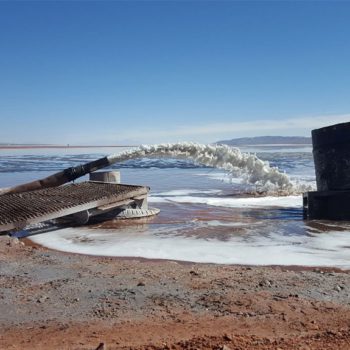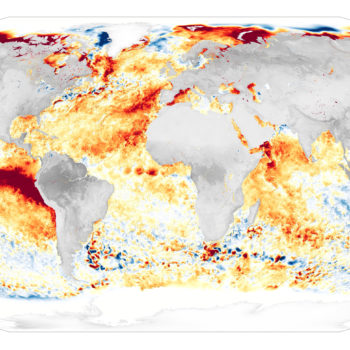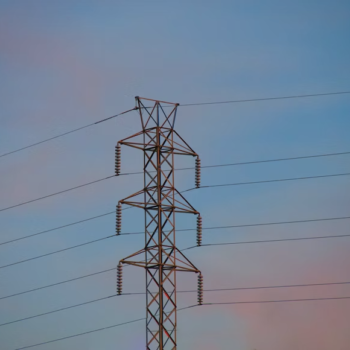|
|
The world’s coral reefs provide food to millions; they protect and create land. Coral reefs serve as essential sources of pharmacological study and information. They are intrinsically valuable and beautiful features of our unique (perhaps singularly so) complex-life-supporting planet.
Coral reefs are also rapidly dissipating with the advent of anthropogenic climate change, overfishing, destructive fishing methods, and pollution.
Anyone who spends significant time snorkeling and diving in the tropics can tell you about the destruction first-hand. Just talk to people diving since the 70s, and they all tell a similar story of slow and steady degradation – fewer fish, less healthy coral, more trash.
It is undeniable that governments fall short of their promise to restore delicate ecosystems across the ocean’s most biodiverse regions. It is time for private capital to play a more intricate role.
Dig deeper → 5 min
My first-hand experience in coral reefs
I often wonder if it was better to witness the original beauty of the world’s most extensive coral reefs and watch their gradual decay or never to know what they once looked like, and I’m not old enough either way.
My frame of reference is much more recent – the early 2000s. And even then, with the amount of bleaching and damage caused in just the last couple of decades, the changes are painfully obvious.
I still love to dive and snorkel, and I hope I do until the day I die. Still, any reef-lover will agree that there is something profoundly depressing about seeing reef fish darting in and out of the dead ruins of what was once their home. These ecosystems can take tens of thousands, if not millions of years, to form.
Add in the horror that is the global plastic problem, and you often leave a session underwater feeling demoralized.
By living and traveling more sustainably, individuals can do their small part, but combating climate change, anthropogenic and natural, and mitigating the effects of rising sea temperatures and acidification, are the sine qua non of the fight to save our planet’s reefs. On top of this, we need continuous altruistic and profit-driven human intervention in marine ecosystems.
Concerning the latter, we are discussing a triad of coral reef restoration, reef health-promoting commercial activity, and the engineering of more resilient, climate-change-resistant corals.
Companies and nonprofits repairing and improving coral reefs
Some companies, nonprofits, and governments are already engaged in efforts to restore and enhance coral.
- Bermuda’s Living Reefs Foundation
- Bahama’s Coral Vita
- Bali’s North Bali Reef Conservation
- the New Haven Reef Conservation Program in Thailand
They are fighting the good fight, but it is far from enough. Not only that, but coral reef restoration can be costly. Costs estimate anywhere from a few thousand to millions of USD per hectare. Different data collection methods, restoration phases, and restoration methods contribute to the disparities.
Moreover, different countries have different capacities and priorities regarding restoration, particularly in places like Indonesia, the heart of the coral triangle. Marine scientists contend that many restoration projects fail due to a lack of monitoring and long-term evaluation.
Aside from the handful of enterprises and interested governments worldwide trying to make headway, restoration efforts often fall on locals, local enterprises, and governments in places like SE Asia. Corruption, apathy, lack of resources, and cutting-edge restoration knowledge make success difficult.
Ocean-focused investment funds
What do we need to fight for healthier oceans?
More blue capital–blended investment funds like the Global Fund for Coral Reefs, a partnership between various UN agencies, including the Green Climate Fund, financial institutions like Pegasus Advisors LP, and private philanthropic sources–and a dedicated international regulatory agency focusing exclusively on coral reefs.
The GFCR raised $625 million over the last ten years to fund sustainable interventions and save coral reefs/communities that rely on them.
$625 million is a start. Though it may represent a potentially promising new frontier in reef conservation, it is far from sufficient.
To put it into perspective, Australia’s Great Barrier Reef is around 35 million hectares, the vast majority already bleached. Even at low-end restoration cost-per-hectare estimates, the world’s reefs need many tens to hundreds of billions of dollars, and that’s to repair already damaged parts. This says nothing of averting the impending catastrophe.
The role of private capital in ocean restoration fundraising
In the face of an increasingly commercialized global economy, it seems impossible to imagine a scenario in which private capital does not play a key role in climate-focused fundraising efforts.
We need carbon credit-style tax incentives to prompt such massive fundraising and investment. But we also need a globally accepted valuation of coral reefs as a proxy for commercial and recreational fisheries health, tourism income, food security, and hundreds of billions of dollars in ecosystems services. This is how we incentivize more blue money to be created and deployed.
On top of this, the effort will also require a standardized global regulatory effort to underwrite and monitor the blue capital paradigm shift. We need an international agency similar to the UN-REDD, the United Nations flagship knowledge and advisory partnership on forests and climate. Their role is to reduce forest emissions and enhance forest carbon stocks; we need the same for coral reefs.
REDD assists 65 partner countries, especially those in biodiversity hotspots whose forests constitute globally important carbon sinks, helping them protect their forests and meet climate and sustainable development goals.
A parallel agency focused on reefs–equally important ecosystems that rival terrestrial rainforests in terms of diversity, if not global implications for the survival of humanity–separate from the UN Environment Programme needs to be created as soon as possible to tackle the threats posed to coral reef ecosystems seriously.
This is a dual approach to incentivizing both the conservation and reconstruction of the world’s reefs.
- subsidies and credits to local governments for complying with international standards and providing measurable results to international regulators
- profit-driven investment in things like coral resiliency research and the development of newer and better surveying and implantation methods
The two factors would conserve this shared human patrimony and natural capital for future generations.
The future of coral reefs and ocean health
As it stands, and at the current decimation rate, a last-minute reversal looks like a long shot. The International Union for the Conservation of Nature presents a bleak picture of what we are against.
Unless Paris Agreement global average temperature commitments are met, “the coral reefs in all 29 reef-containing World Heritage sites would cease to exist by the end of this century.”
And that is just the threat posed by global warming. You also have to factor in the damage done by overfishing, destructive fishing, plastic pollution, and agricultural/ industrial runoff pollution. Plus, the effect of natural disasters like hurricanes, earthquakes, volcanoes, and tsunamis (both naturally occurring and human-exacerbated).
We are at the 11th hour, and the world needs to act fast. Whatever your thoughts on new investment philosophies like Blackrock’s ESG, it is inarguably true that the public sector cannot handle these issues independently. Perhaps not, given the constant politicization of existentially essential matters throughout the West.
Public-Private Partnerships like the Global Fund for Coral Reefs will be the deciding factor. And we are in desperate need of more of them.













No Comments